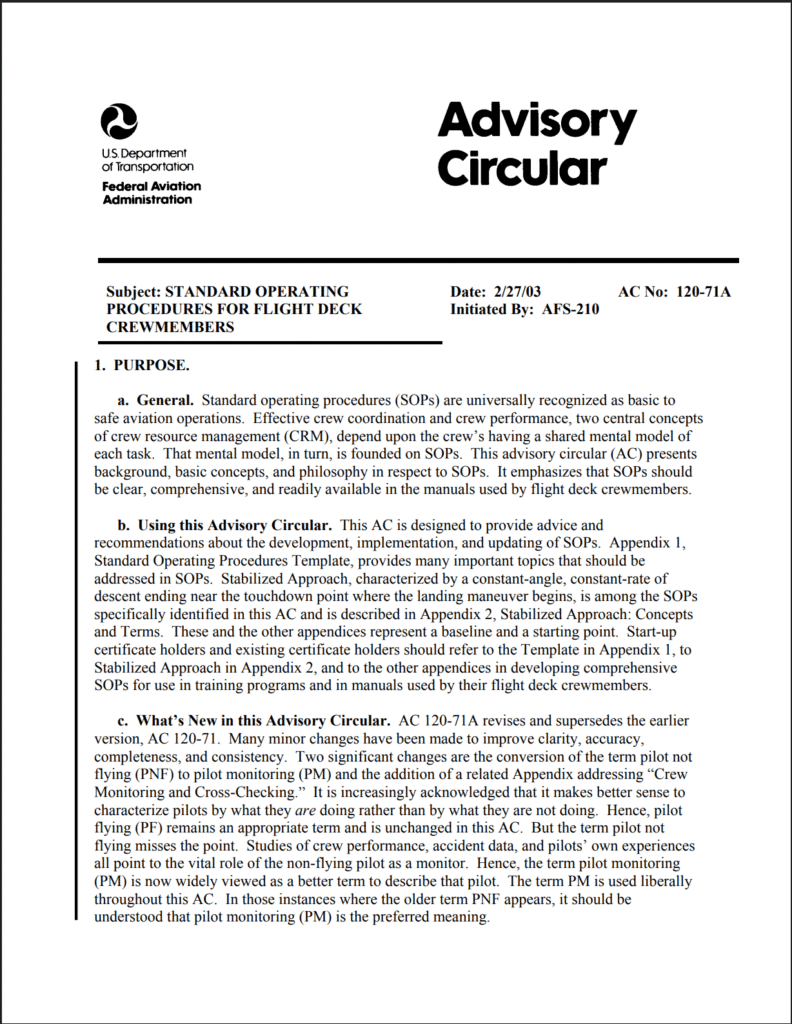Introduction
If you’re training to become a commercial pilot in India, you’ve probably come across the term Standard Operating Procedures (SOPs). But what exactly are SOPs in aviation, and why do airlines emphasize them so much?
Simply put, SOPs are the backbone of professional aviation. They provide structured, repeatable guidelines for every stage of flight — from pre-flight checks to landing. For aspiring pilots, understanding SOPs is essential not only to pass airline assessments but also to ensure safe, efficient, and standardized flying once you step into the cockpit.
What Are SOPs in Aviation?
Standard Operating Procedures (SOPs) are meticulously documented, step-by-step protocols crafted to ensure consistency, safety, and efficiency in flight operations. These guides—often issued by aircraft manufacturers or airlines—cover every aspect of flight, from pre-flight checks and takeoff procedures to abnormal and emergency responses. Pilots may sometimes perform critical tasks from memory but refer to written SOPs for confirmation.
They are designed to:
- Ensure consistency in operations across different pilots and flights.
- Minimize human error by providing clear guidance in complex situations.
- Enhance crew coordination through standardized callouts and workflows.
- Align with regulatory frameworks (DGCA, ICAO, airline-specific requirements).

Why Are SOPs So Important in Commercial Aviation?
1. Safety First
Aviation is a highly complex industry where even a small mistake can have serious consequences. SOPs provide predictable, tested responses to situations, reducing risks and ensuring flight safety. SOPs standardize actions across crews, reducing variation and preventing mistakes—especially under stress or fatigue. They are powerful risk mitigation tools in commercial aviation.
2. Crew Resource Management (CRM)
Commercial flights involve multi-crew coordination. SOPs ensure that both pilots are on the same page, using standardized terminology, callouts, and actions. This prevents confusion and improves decision-making under pressure.
3. Efficiency & Professionalism
Airlines value efficiency. SOPs streamline cockpit workflows, reduce workload, and allow pilots to focus on what really matters: flying safely and efficiently. Reliance on repetition can breed complacency. SOPs help pilots stay disciplined and prepared, even when a procedure feels routine.
4. Regulatory & Training Compliance
The DGCA and international regulators mandate SOP adherence. For cadet pilots in India, knowing SOPs is key to clearing simulator checks, airline assessments, and line training.
Did you know? – Multiple investigations—such as those into the 2017 Teterboro Learjet crash—have cited SOP deviations as contributing factors. SOP adherence is a proven barrier to accidents
How SOPs Are Developed & Updated
- Manufacturer Origins & Customization Manufacturers design SOPs to align with aircraft systems and intended operating procedures. Airlines may adopt these or tailor them to meet operational philosophies and regional regulations—with regulatory approval.
- Human-Centered Development Human Factors techniques like HTA (Hierarchical Task Analysis) are used to analyze tasks and refine SOPs thoughtfully, ensuring clarity and usability.
- Iterative Review Process SOPs undergo regular feedback loops—via flight data monitoring, safety reports, or crew input—to stay relevant and safe. They must be compelling and actionable for effective field use.
Key Components of Effective SOPs
- Concise and Unambiguous Wording Language must be clear to eliminate confusion in high-stress scenarios.
- Critical Callouts & Workflows Including triggers, standard callouts, and action sequences ensures precision in key phases like takeoff, approach, communications, and emergencies.
- Sterile Cockpit Rule Compliance Omitting non-essential chatter below 10,000 ft is often integrated into SOPs for critical flight phases.
Examples of SOPs in Commercial Aviation
Here are a few common SOP areas that every airline pilot must know:
- Pre-flight preparation: Aircraft walkaround, documentation checks, fuel verification.
- Checklists: Normal, abnormal, and emergency checklists (e.g., engine failure, hydraulic loss).
- Standard Callouts: Altitude passing, V1/Rotate, positive climb, gear up, etc.
- Sterile cockpit rules: No unnecessary communication below 10,000 feet.
- Landing protocols: Stabilized approach criteria, go-around decision-making.
These are not optional “suggestions” — they’re enforced procedures that pilots must follow to ensure safety and uniformity.
SOPs for Aspiring Pilots in India
If you’re preparing for a career with an Indian airline, here’s how to build familiarity with SOPs:
- Flight School Training: CPL programs introduce you to checklists and basic SOPs.
- Airline Cadet Programs: IndiGo, Air India, and other carriers train cadets in airline-specific SOPs during simulator and line training.
- Self-Study & Practice: Watch airline SOP videos, review DGCA guidelines, and practice checklists during sim time.
- Simulator Prep: During interviews and simulator assessments, examiners check if you stick to SOPs under stress.

How SOPs Influence Airline Pilot Careers
For cadet pilots, SOP discipline often decides success or failure during assessments. Airlines don’t just want technically skilled pilots; they want professionals who can follow structured procedures every single time.
- During interviews: You may be tested on your knowledge of SOPs and CRM.
- In simulator checks: Examiners watch how consistently you use SOPs under pressure.
- On the line: Adhering to SOPs ensures smooth integration into the airline’s operational culture.
Conclusion
SOPs in aviation are far more than checklists — they are the foundation of safe and professional flying. For aspiring airline pilots in India, understanding and practicing SOPs early on will not only prepare you for DGCA checks and airline assessments but also build the discipline required for a successful flying career.
At Marigold Aviation, we guide cadets through every stage of pilot training — from CPL to airline prep and beyond. With the right training and SOP awareness, you’ll be ready to take the right seat with confidence.






